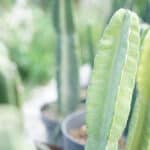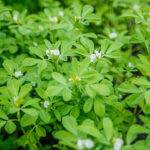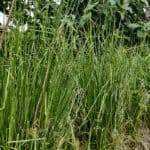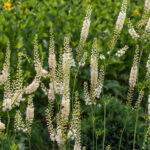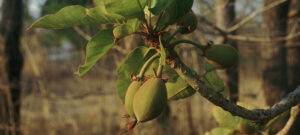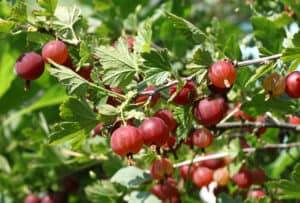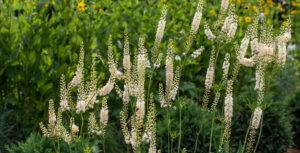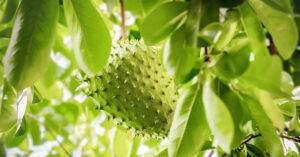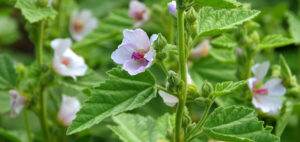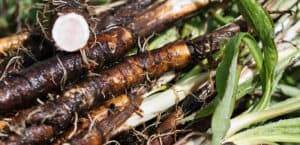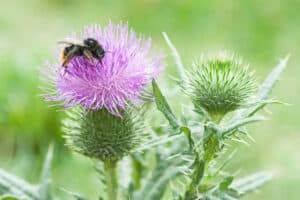There isn’t anything quite like the sweet, sweet, aroma of Lemon Grass. You can make it into teas, add it to stews, or simply enjoy the delicious fragrance while you’re out in the garden. It’s also extremely easy to propagate and can be planted as part of a functional and aesthetically pleasing design. Planted side-by-side, Lemon Grass helps define edges in your design, while effectively producing biomass, preventing the spread of weeds, and so much more. I am personally fond of planting Lemon Grass next to garden beds where it can be cut as a quick “chop-and-drop” style mulch.
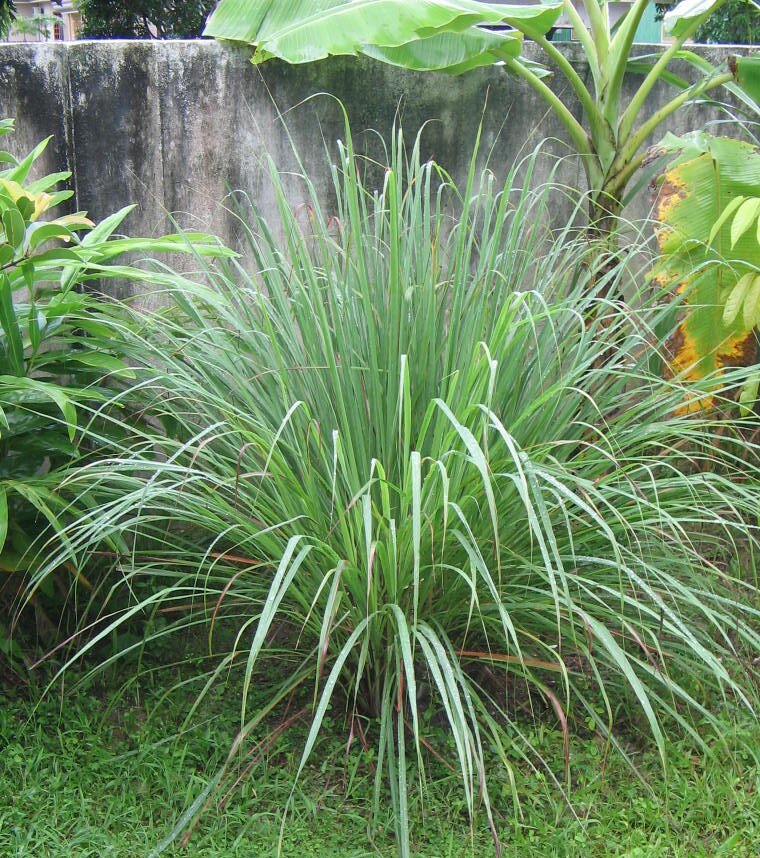
I could go on and on about the wonders of Lemon Grass, but ultimately what I really love is snipping a handful of leaves, wrapping it in a bundle, and throwing it fresh in a large mug full of hot water. Its soothing taste feels great for the soul and makes a great addition to any routine. You can’t go wrong with planting this wondrous plant!
Origins Of Lemon Grass
Lemon Grass originates from Southeast Asia and belongs to a genus of aromatic bunch-grasses known as Cymbopogon. This genus contains many dozens of aromatic grasses, including at least 2 species of Lemon Grass. It also contains species known as Citronella (from which the natural insect repellent is derived, although other plants also produce this fragrance) and even obscure ones like Turpentine Grass and Ginger Grass.
The most commonly consumed and cultivated Lemon Grass is known as the “West Indian Lemon Grass” and scientifically know as Cymbopogon citratus. East Indian Lemon Grass (Cymbopogon flexuosu) is also commonly found in gardens and botanical collections. These have been spread to many tropical parts of the world where they are consumed both for their delicious flavor and relaxing medicinal properties. In Southeast Asia, they consume the leaves and the small “bulbs” which form at the bottom of the bunches.
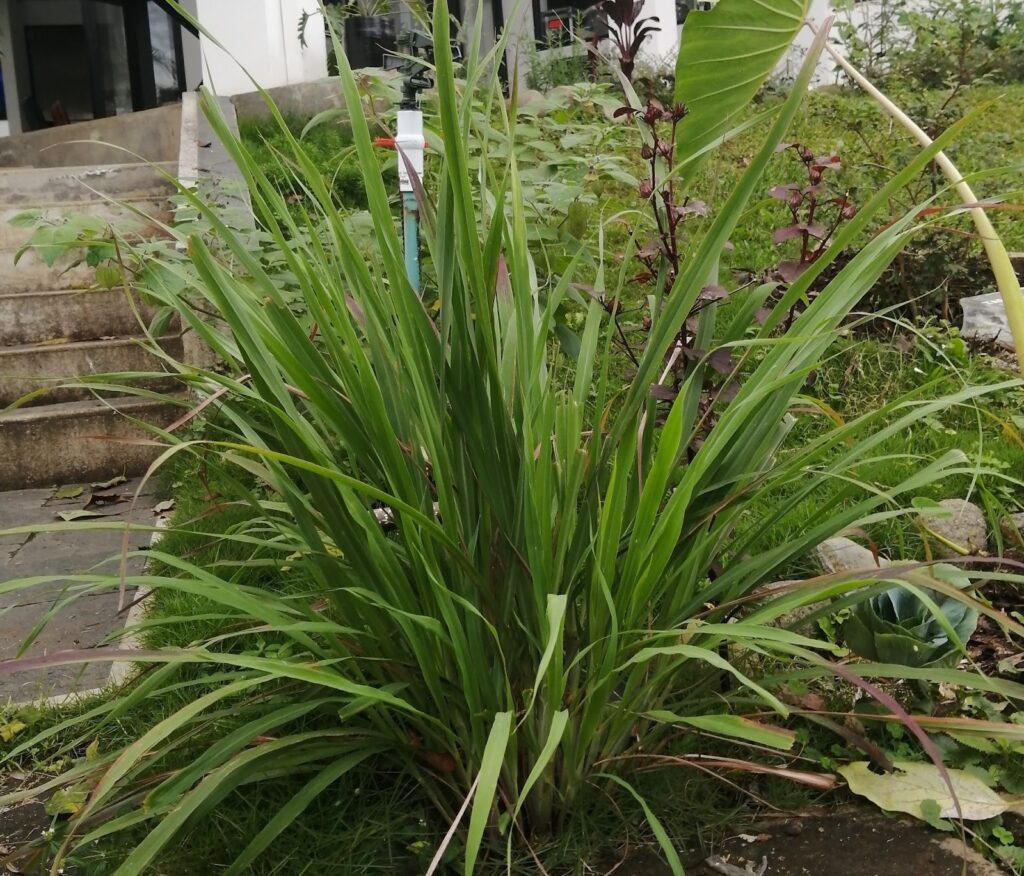
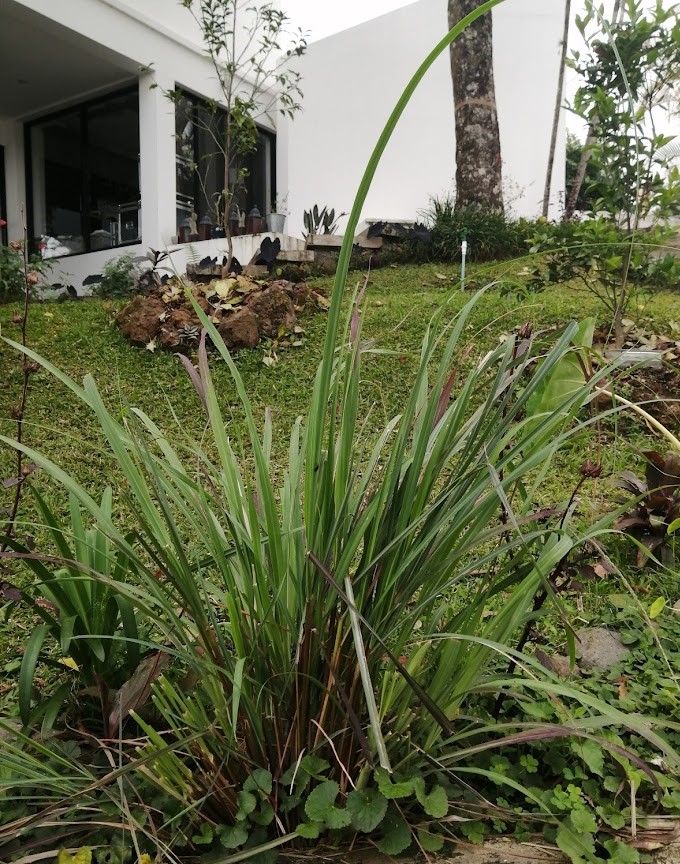
The East Indian variety has much longer and more vibrantly purple stem bases. Photos by Timo Mendez (CC BY-SA 2.0).
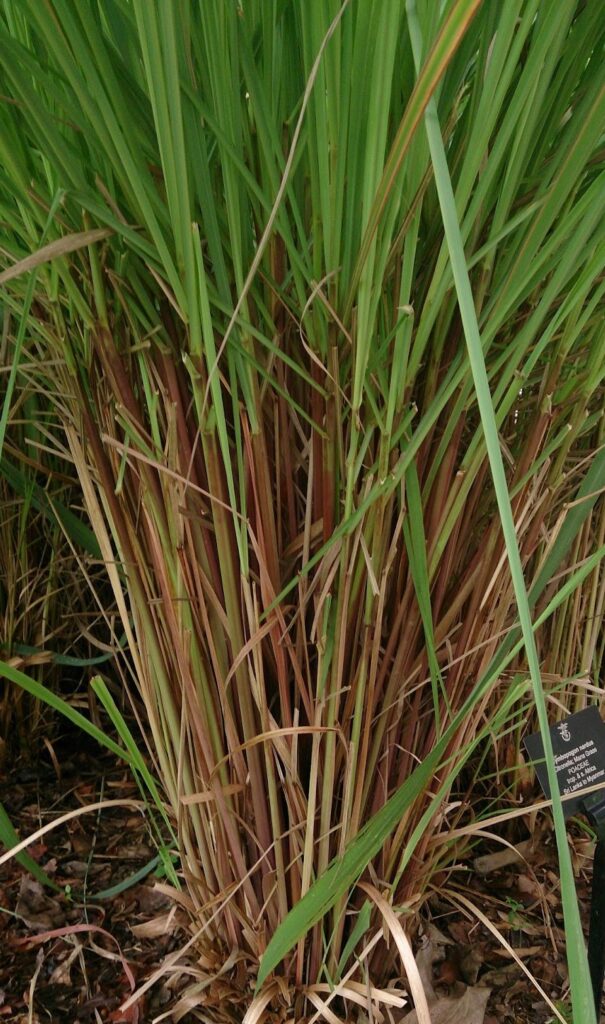
Generally speaking, all of the Cymbopogon species grow similarly and can be cultivated using the same principles. Some grow larger than others, but essentially this guide can be utilized for Lemon Grass, Citronella Grass, or any of the close relatives. Just don’t make the mistake of using Citronella instead of Lemon Grass! Don’t worry though, you wouldn’t be the first; to those unfamiliar with the aromas they can smell quite similar.
Cultivation of Lemon Grass
Description
Lemon grass grows in bunches which can grow to be 60-120 centimeters in height (2-4 feet) and up to a meter (about 3 feet) in width if the conditions are good for it. It has a clumping habit, with many individual tufts of grass growing together in a bunch. Like most bunch grasses, it forms long and narrow leaves that are flat and a bit sharp. If you’re not careful when handling Lemon Grass it can be possible to give yourself a thin paper cut. In some climates, Lemon Grass produces a flowering spike that emerges from the center of the clump. The roots are fine, hair-like, and grow mostly on the soil surface.
Temperatures
Lemon Grass is native to the warm tropics and that’s where it thrives the best. It loves year-round warm weather, with temperatures above 20C (70F), and it is sensitive to frost. It can also be grown in climates such as the montane tropics or Mediterranean zones with mild winters, but these are fringe zones and it won’t be happy all year there! In colder regions, it is best to grow it as an annual or in a pot and move it indoors during the winter.
Sunlight
Ideally, you should plant Lemon Grass in full sun. If you have extremely hot or dry weather, it may benefit from some shade though. Shade-grown Lemon Grass will grow slower and may be less fragrant.
Soils
Like most plants, Lemon Grass wants good drainage. Sandy soils and loams are excellent, although they can do marvelously in clay soil given that the top soil does not become water-logged for extended periods.
Fertility
Lemon Grass does well in marginal soils although it can grow exponentially better in soil well amended with high-quality compost.
Water
Lemon Grass does best with year-round access to water. Once established it is relatively drought tolerant and can handle a prolonged dry season, although it does best with irrigation in this scenario.
Propagation
Lemon Grass is always propagated a-sexually using the individual “tufts’” or “clumps” that develop in a large bunch of Lemon Grass. This propagation process is aptly termed division. While it may be possible to grow from seed, this is rarely done. At least, I’ve never seen it or heard of anyone doing it. Plus, why would you want to bother with seeds when it propagates so easily through division?
- To begin, start with a healthy mother plant from which you will be taking your propagation material. Choose a healthy plant that is well-established and free of disease. The bigger the plant, the more propagation material you will have.
- Once you’ve chosen a healthy plant, coppice all of the leaves so it’s a bit easier to work with. Do this: pruning scissors, a machete, or whatever tool you find most suitable. Cut the leaves right above the circular stems from which the blades of grass are emerging. This is usually about 30 cm (1 foot) in height.
- Using a sharp shovel you are going to want to uproot this plant. You may have to do this in sections if the plant is really big. Essentially, you’re going to take your shovel and place it at the edge of your lemon grass plant. Dig deep on all sides and lift it until the plant is uprooted.
- Once you’ve uprooted your plant it’s time to divide it into individual clumps. This is done by hand, splitting them into individual stems. Viable pieces will have small pieces of root visible at the base. Remove dead vegetation and choose only healthy green-looking starts.

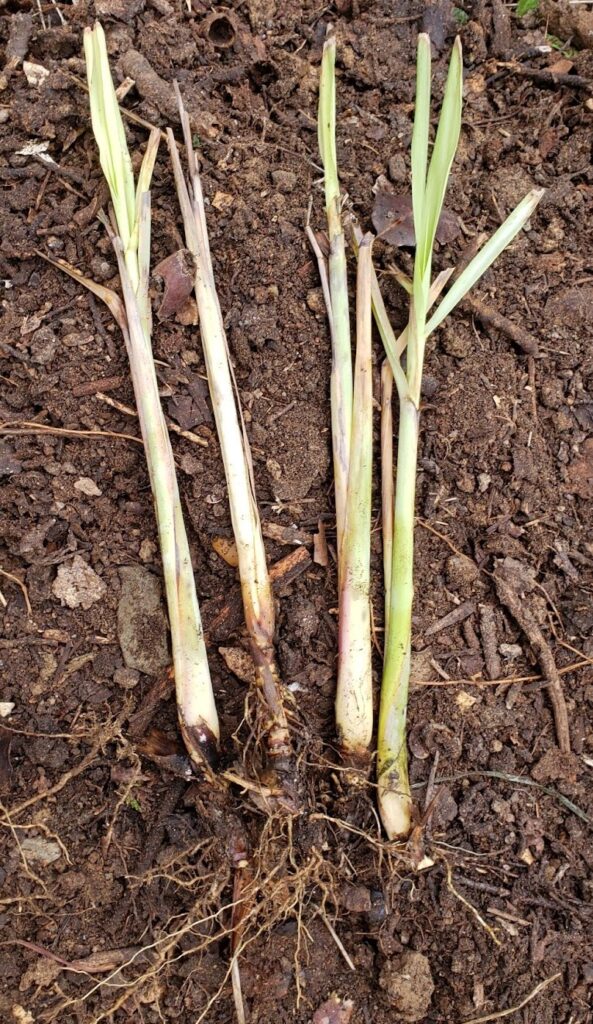
- These can be planted immediately, but if for whatever reason you can’t do it right away it’s best to keep them moist and in the shade. You can place them in a bucket, or whatever container you have handy, and hose them down a bit with water. If you need to transport them or store them for longer, you can take each individual plant and wrap it in a moist paper towel. Store them for no longer than 1-2 weeks or else they will lose vigor and could be prone to fungal infections. Alternatively, for longer storage, you can temporarily plant them until you are ready to plant them. You can also root them in clean water, making sure you change the water frequently.
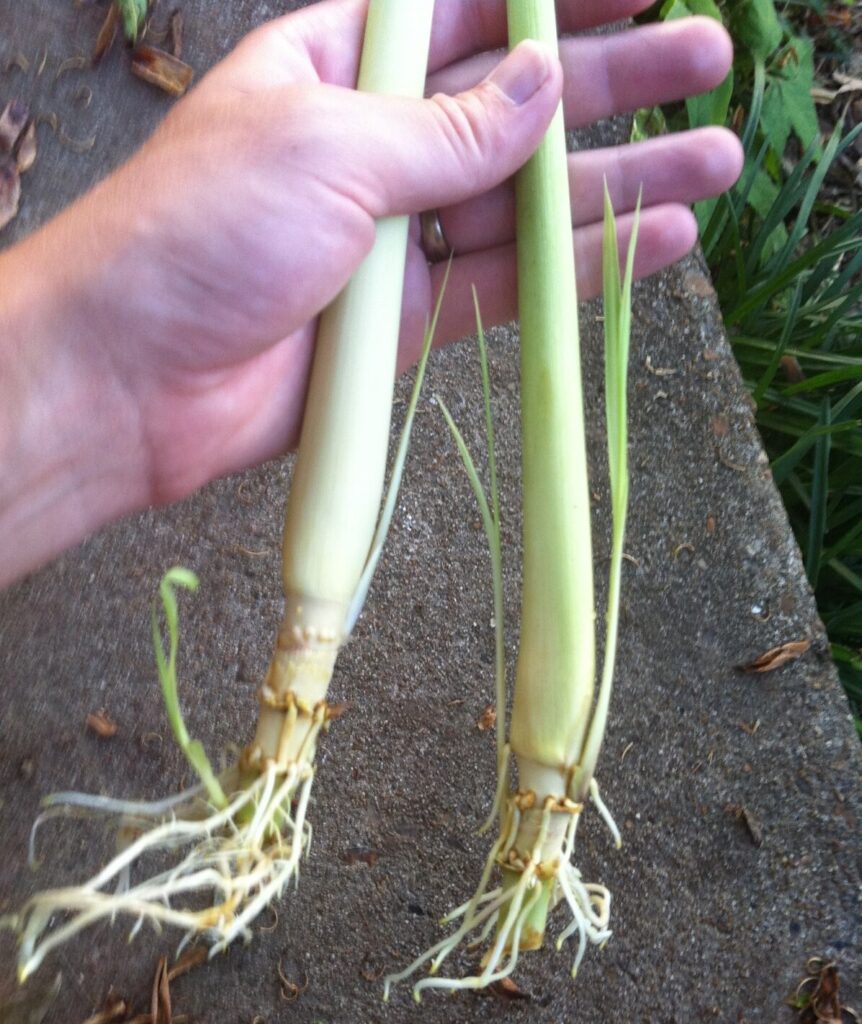
Planting Lemon Grass
Planting is easy. Simply take your starts and bury them shallowly in the soil so the bottom root is below ground. This is usually just 3-4 inches (7-10 cm) in depth. Make sure they are sturdy and don’t topple over. Also, ensure they have adequate moisture during the first 1-2 months after planting.
As I mentioned earlier in the text, Lemon Grass grows great in lines at various edges within your design. They can be planted at the edge of a trail, a garden bed, or even around fruit trees. You can plant them densely, as close as 3 inches (7 cm), to form a tight row that is impenetrable by creeping weeds. They can also be planted on contour to help reduce erosion and slow water, albeit it is not as effective as other grasses like vetiver.
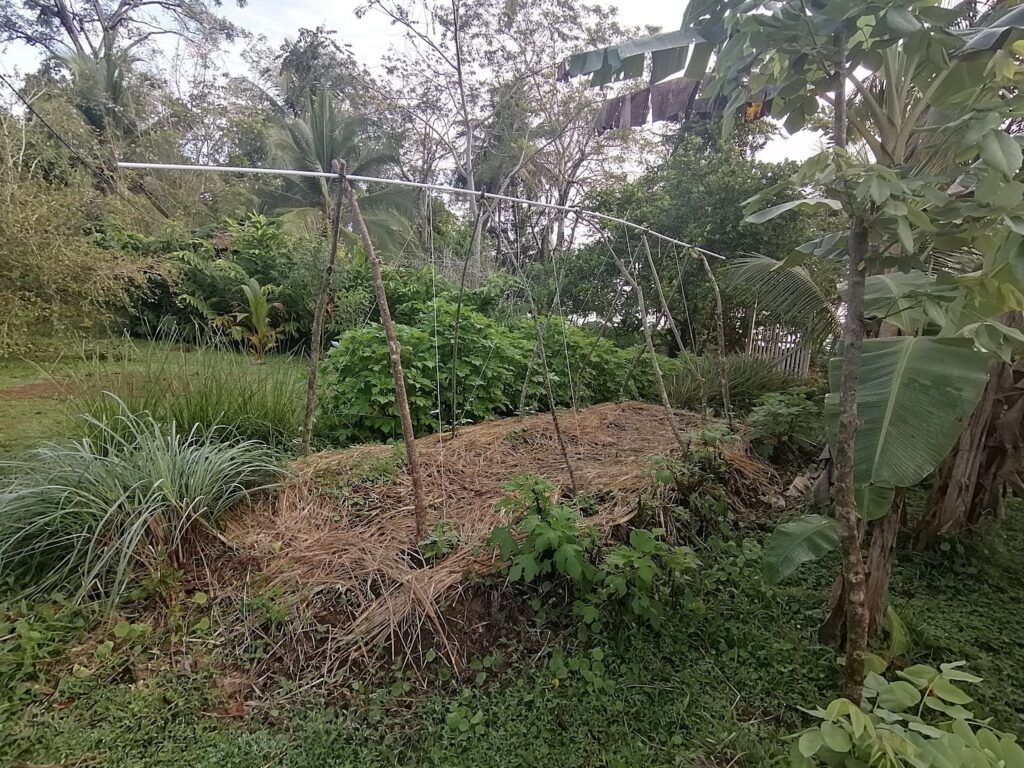
If you do plant them near a fruit tree, make sure to plant them at least a 3-4 radius from the center of the tree to not disturb the root zone of the tree. Planted near garden beds they can be coppiced once they become well established. This can be added as a green mulch which will temporarily protect the soil and eventually decompose and feed it. If necessary you can pile the long grass cuttings and chop them up into smaller pieces. This is more visually appealing and orderly.
Lastly, like many aromatic plants Lemon Grass can is said to help deter pests and herbivores from your garden. Generally speaking, for this sort of deterrence to be effective I think the Lemon Grass would have to be planted very close to whatever plant you are trying to defend. This way the volatile oils can truly deter any pest, and any herbivore that may go after your cherished plant may be thrown off by the pungent odor.
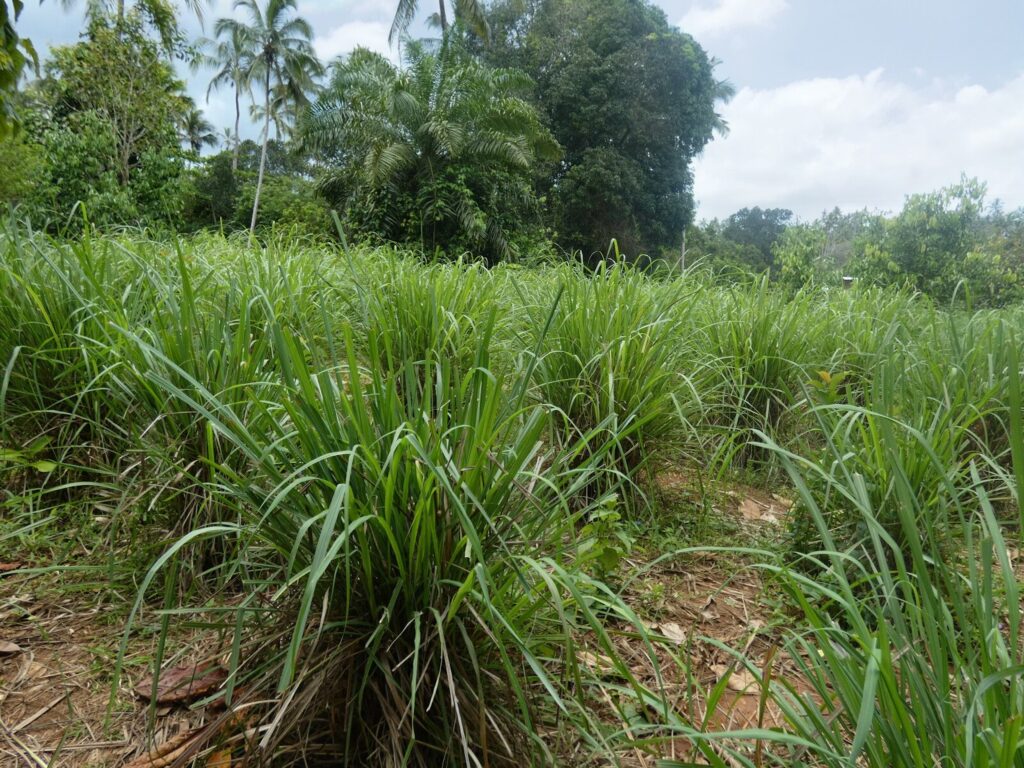
Managing Lemon Grass
Lemon Grass is a plant that requires very little management. It grows vigorously, is resistant to pests and disease, and can handle adverse conditions once it’s established. Generally speaking, harvesting and repropagating are going to be the most laborious parts of caring for Lemon Grass!
- They’re full of essential oils, so pests rarely, if ever, bother them. This being said if they are stressed for whatever reason, aphids and other insects could begin to attack them. The same goes for disease.
- Once plants become large, it is important to cut them back and remove any dead vegetation that accumulates within the plant. Dead vegetation can hold moisture, promote fungal growth, and potentially promote disease. You simply want to do this by hand, pulling out any loose organic matter that’s in there. Leaves and other debris can also accumulate inside, so it’s good to remove those while you’re at it. Wear gloves to avoid cutting yourself with sharp leaf blades.
- When plants become old, they can also become extremely dense with new stems. Like dead vegetation, this can hold moisture and promote fungal growth. For this reason, it is good to thin the plants out occasionally and promote new healthy growth.
- Likewise, when your plant is old it may be beneficial to coppice the entire plant and promote fresh healthy growth.
- If you live in a cold climate, you can cut your plant back before the first frost and apply a thick layer of mulch around the plant once the temperatures begin to drop. Once the spring arrives, remove this mulch from the plant base to avoid causing rot.
- Lemon Grass rust is practically the only disease that affects Lemon Grass. It forms brown and rusty splotches on the leaves. This occurs when there is excess moisture and can be prevented by the management techniques described above. This is rarely ever devastating, and diseased plants can simply be cut back and tended to if this becomes a problem.

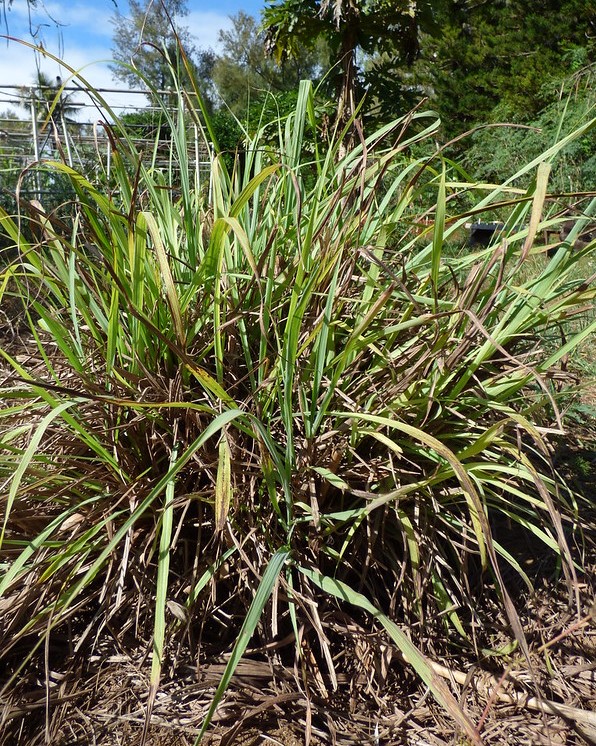

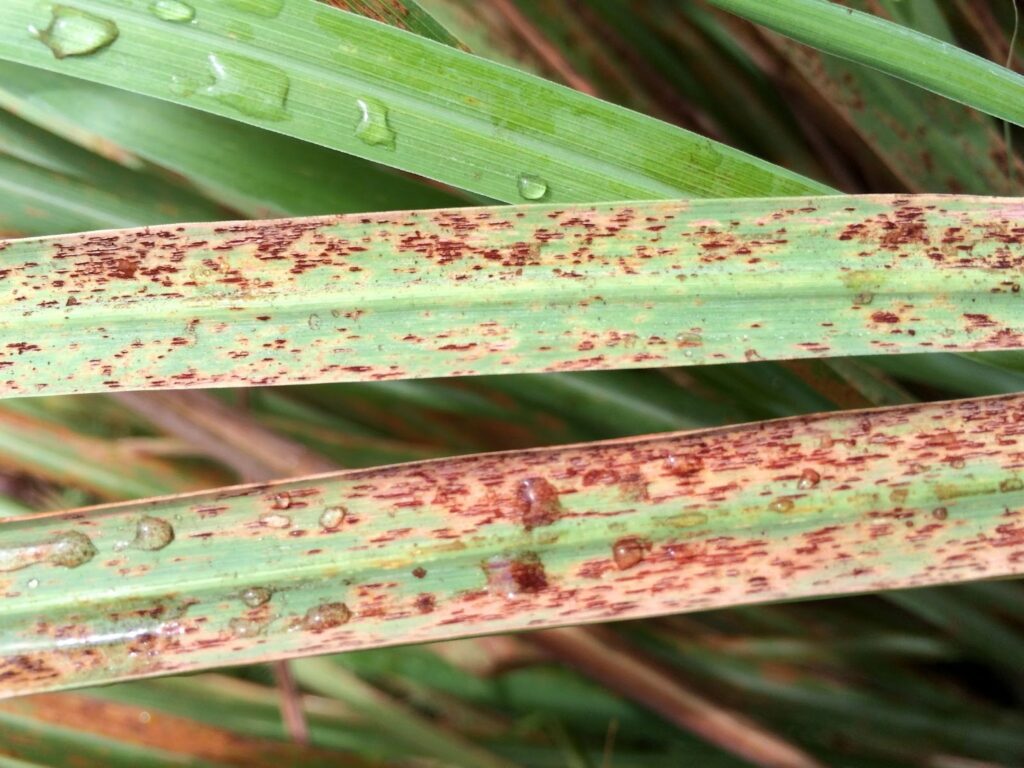
Harvesting and Using Lemon Grass
When it comes to harvesting Lemon Grass you can either just harvest leaves or you can harvest entire bunches. Leaves are better to harvest if your plant is still getting established, but once you have an older plant, go at it and get entire bunches! The base is extremely aromatic and can give a dish an extra potent lemon-grass flavor. Plus, by harvesting the bunches you are only helping thin out the plant and will in the long run improve its health.
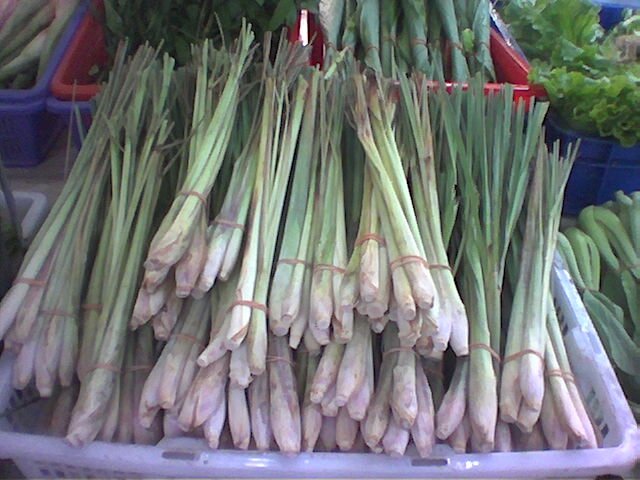
For cooking, Lemon Grass is best for infusing into a stew, curry, or dish with an abundance of liquid. Personally, I like to tie the grass into a bundle and then simply pop it into the pot while it’s simmering, place a lid on, and let it simmer for another 5 minutes before turning it off the heat. I find if you overcook it, a lot of the volatile aromas are lost. Once properly infused, you want to remove the Lemon Grass. I don’t recommend eating the grass itself, as it is full of silica, fibrous, and sharp. Believe me, you don’t want to have a piece of Lemon Grass stuck in the back of your throat. I’ve learned my lesson there.
For tea, I do the same thing. Tie it in a bundle, place it in a teapot or cup, put a lid on it, and let it steep for 5 minutes. Definitely, it’s a “pro move” to also infuse these aromatic beverages with a lid as you capture more of the volatiles. Lastly, enjoy the relaxing and soothing effects of this wondrous plant!









